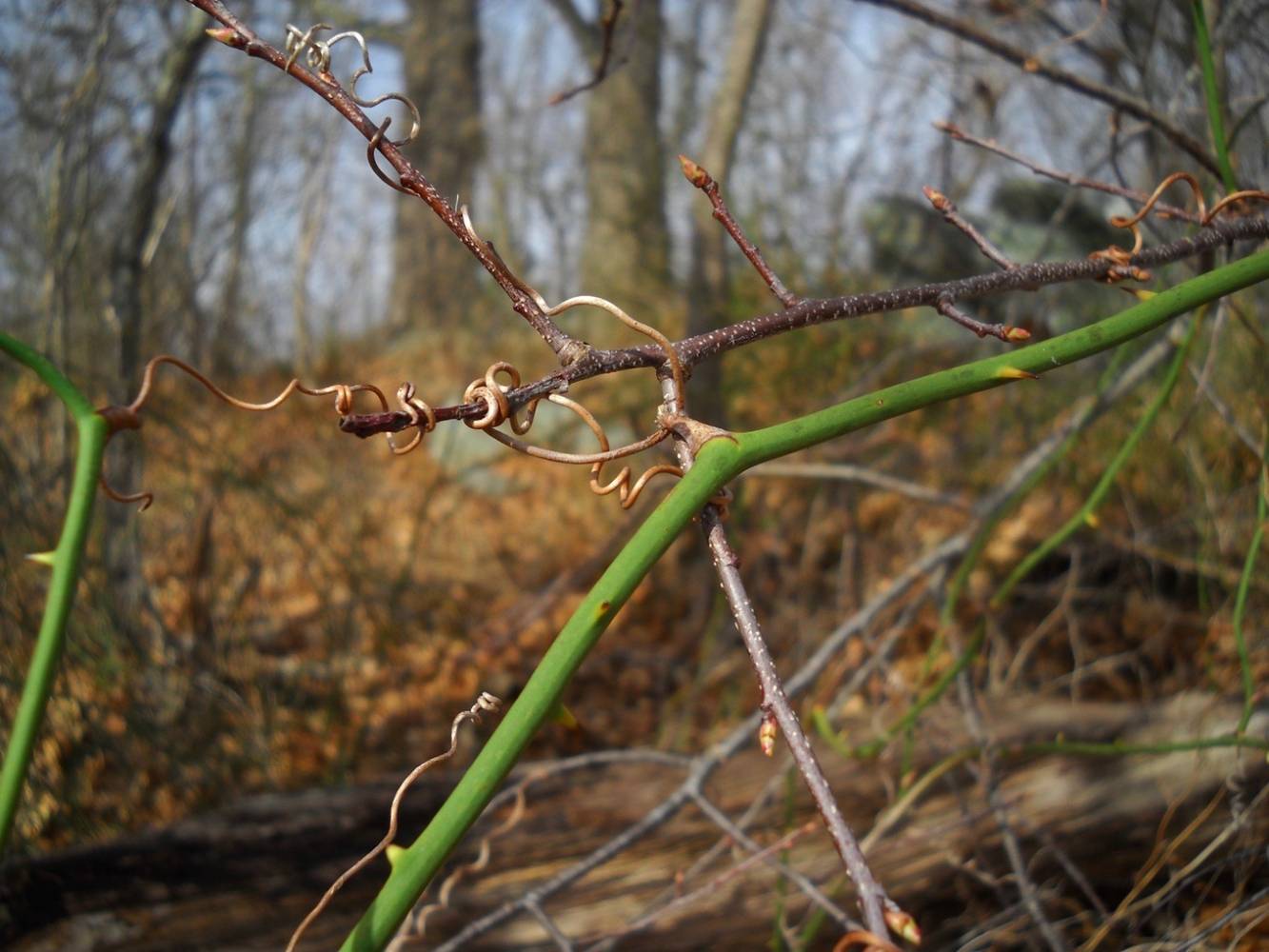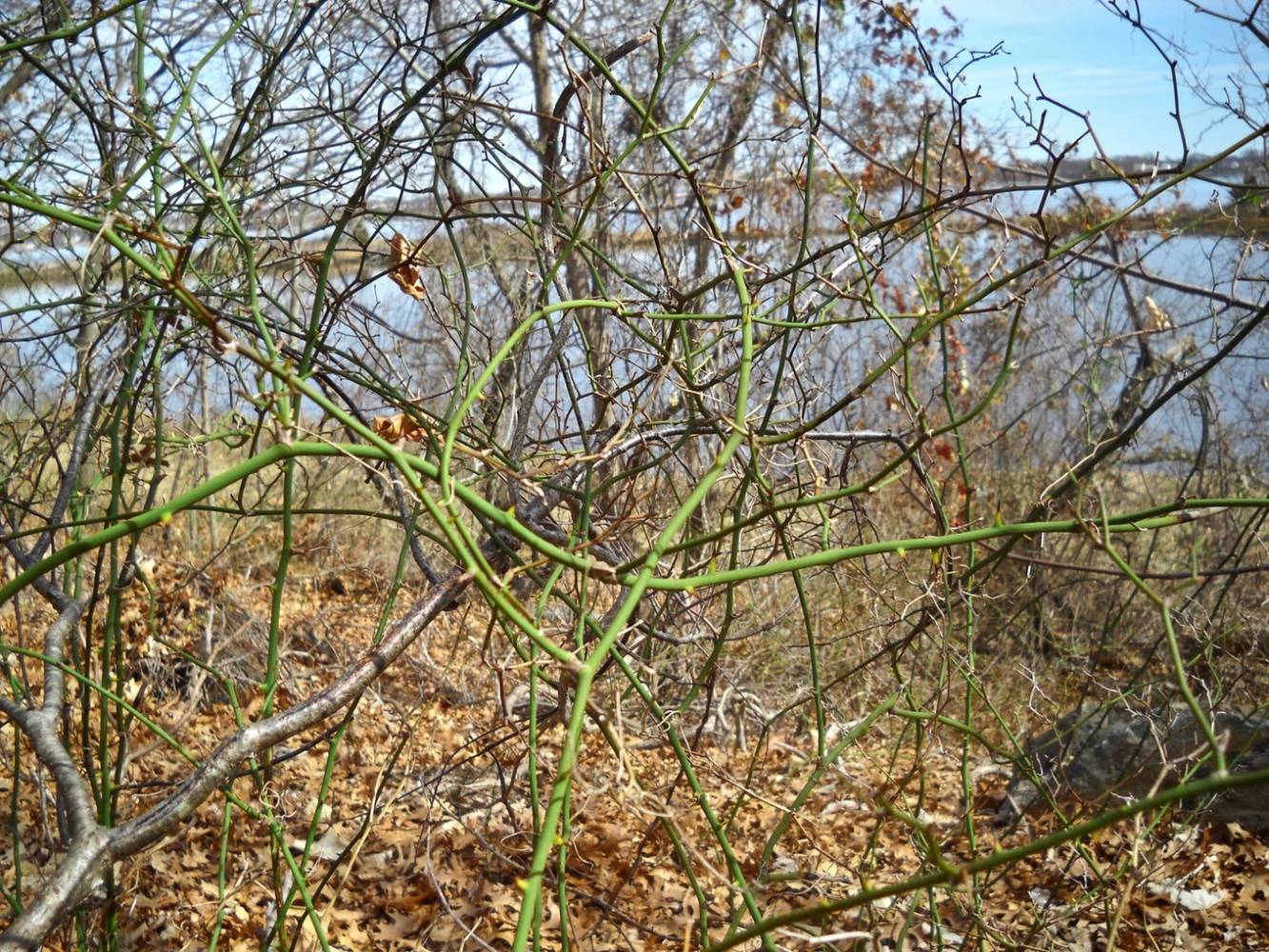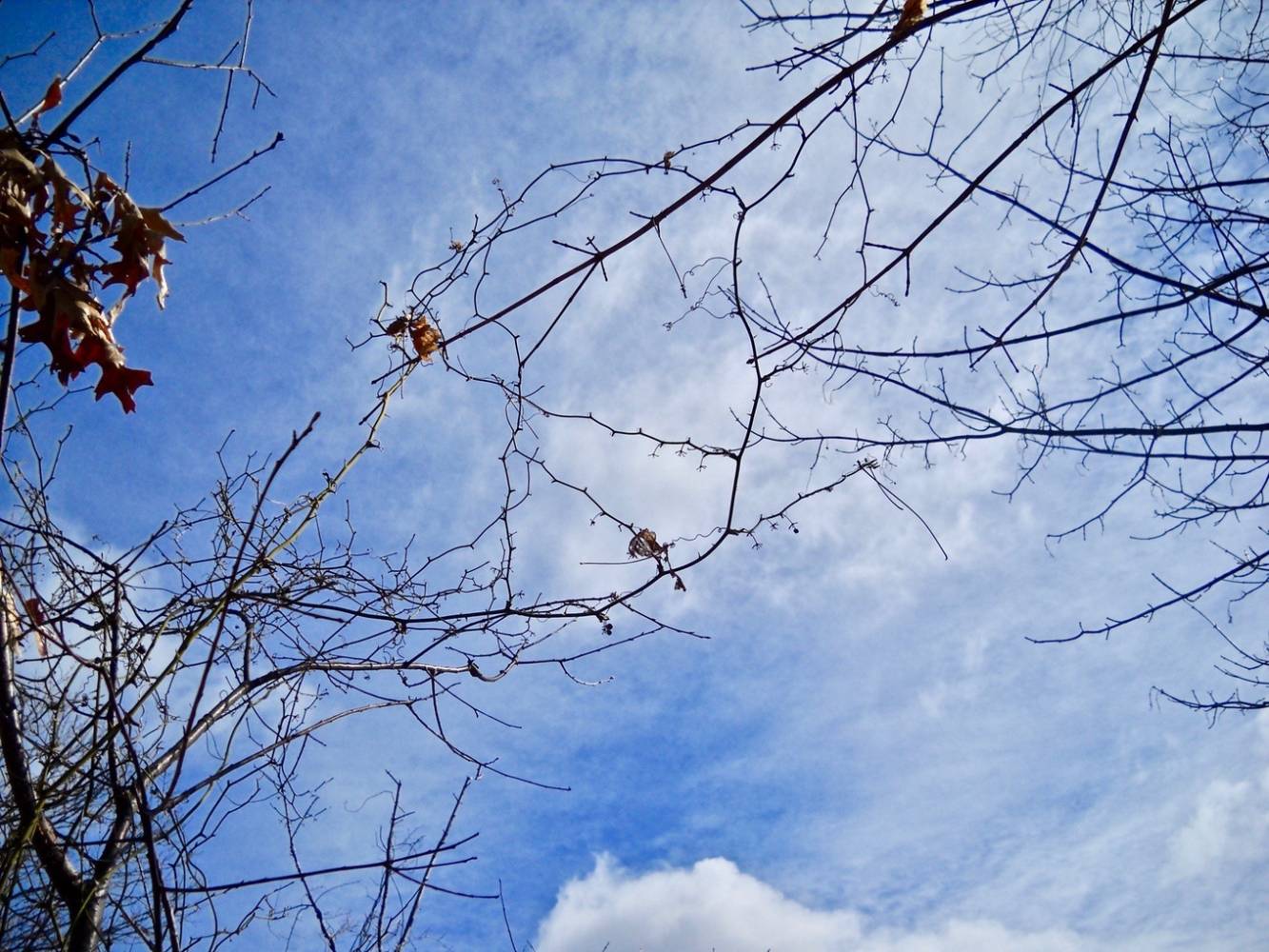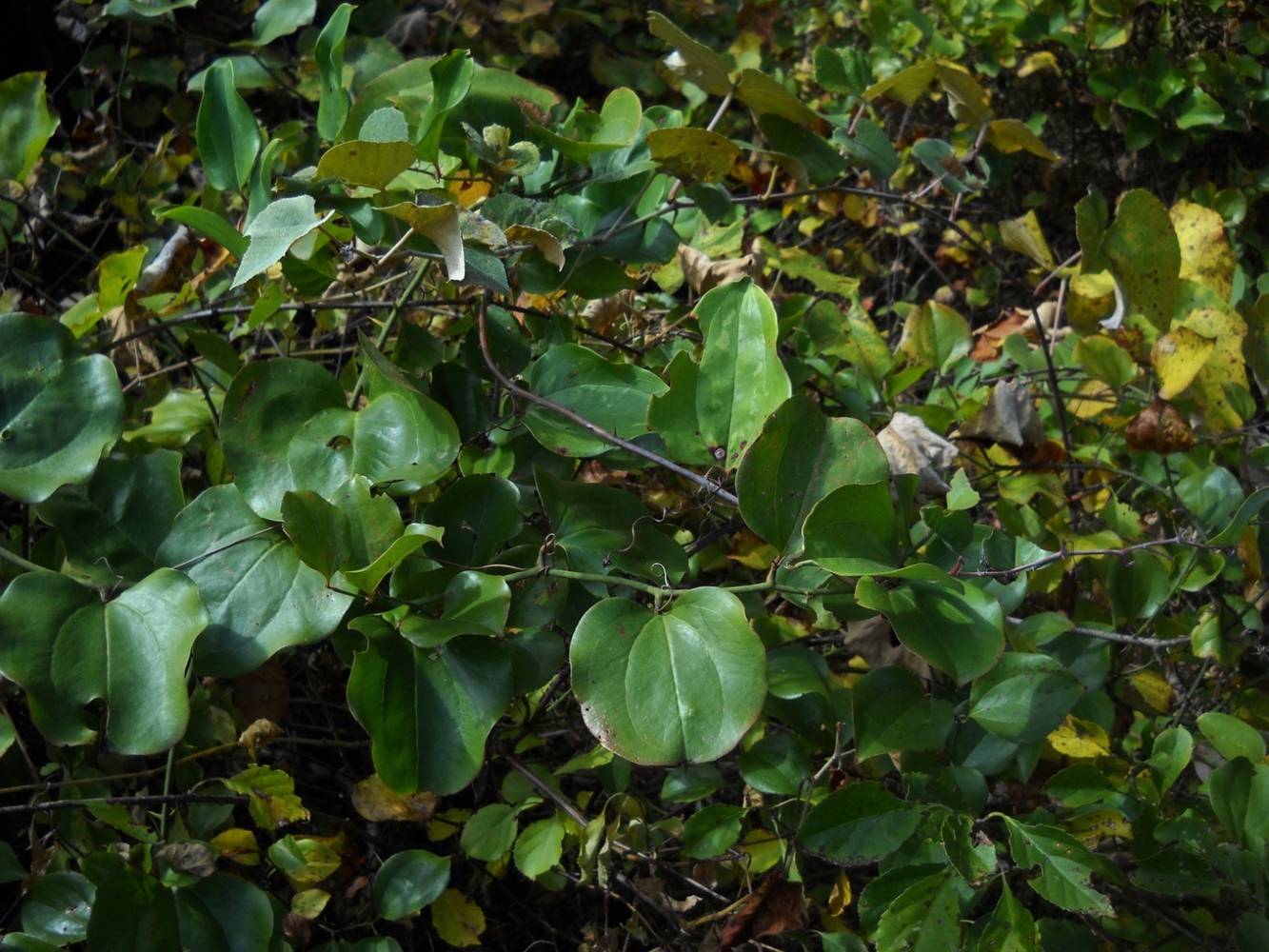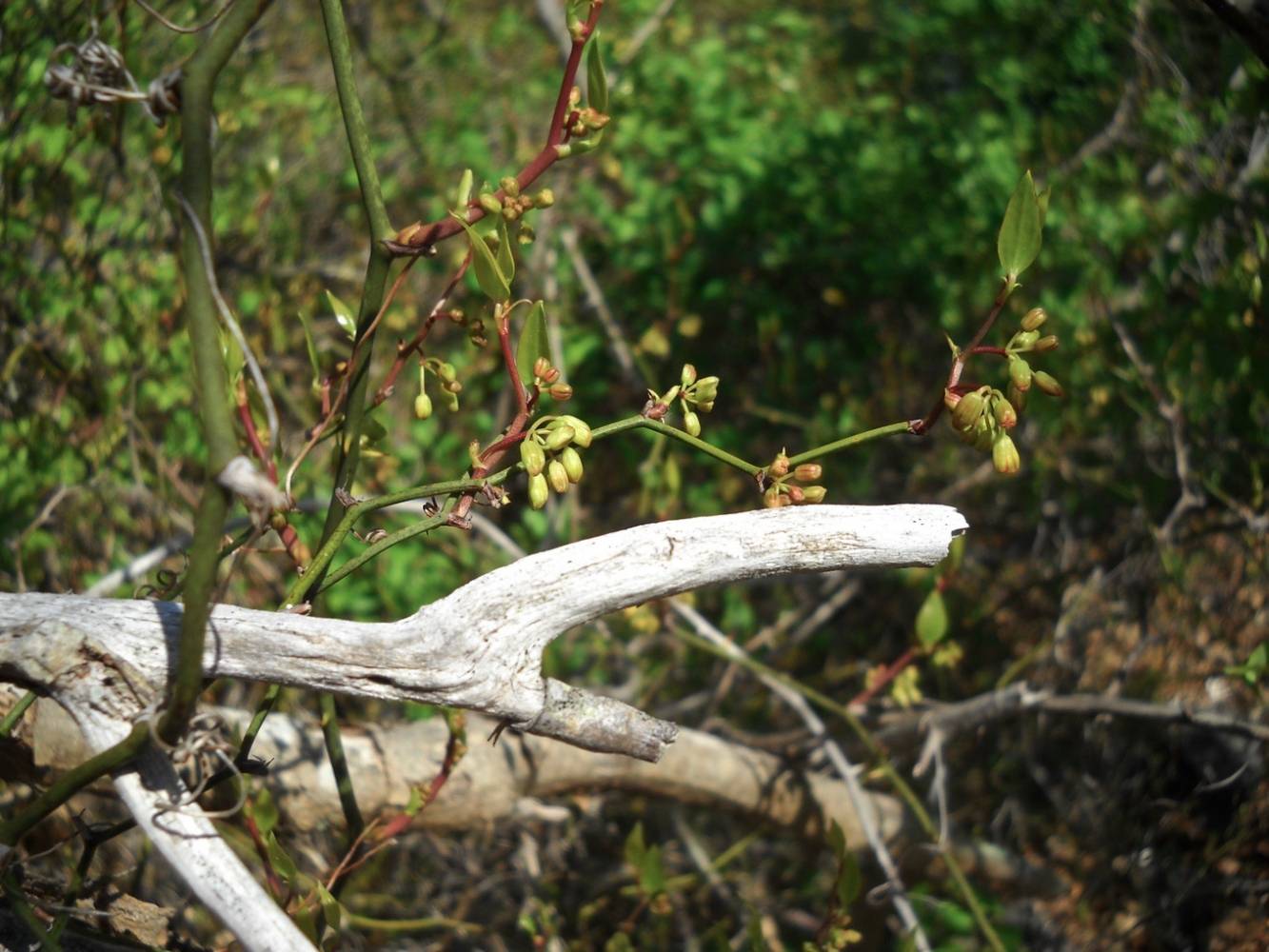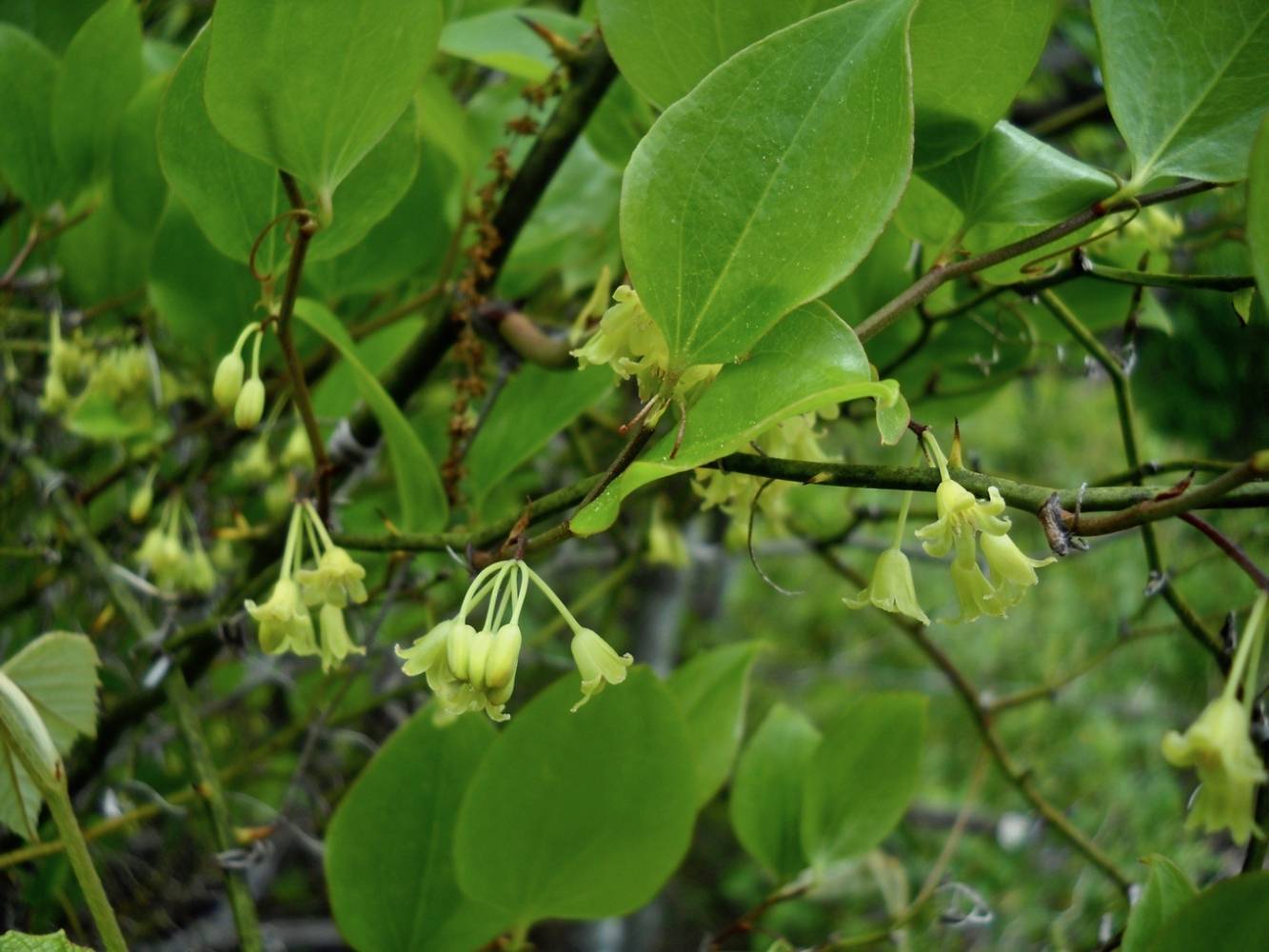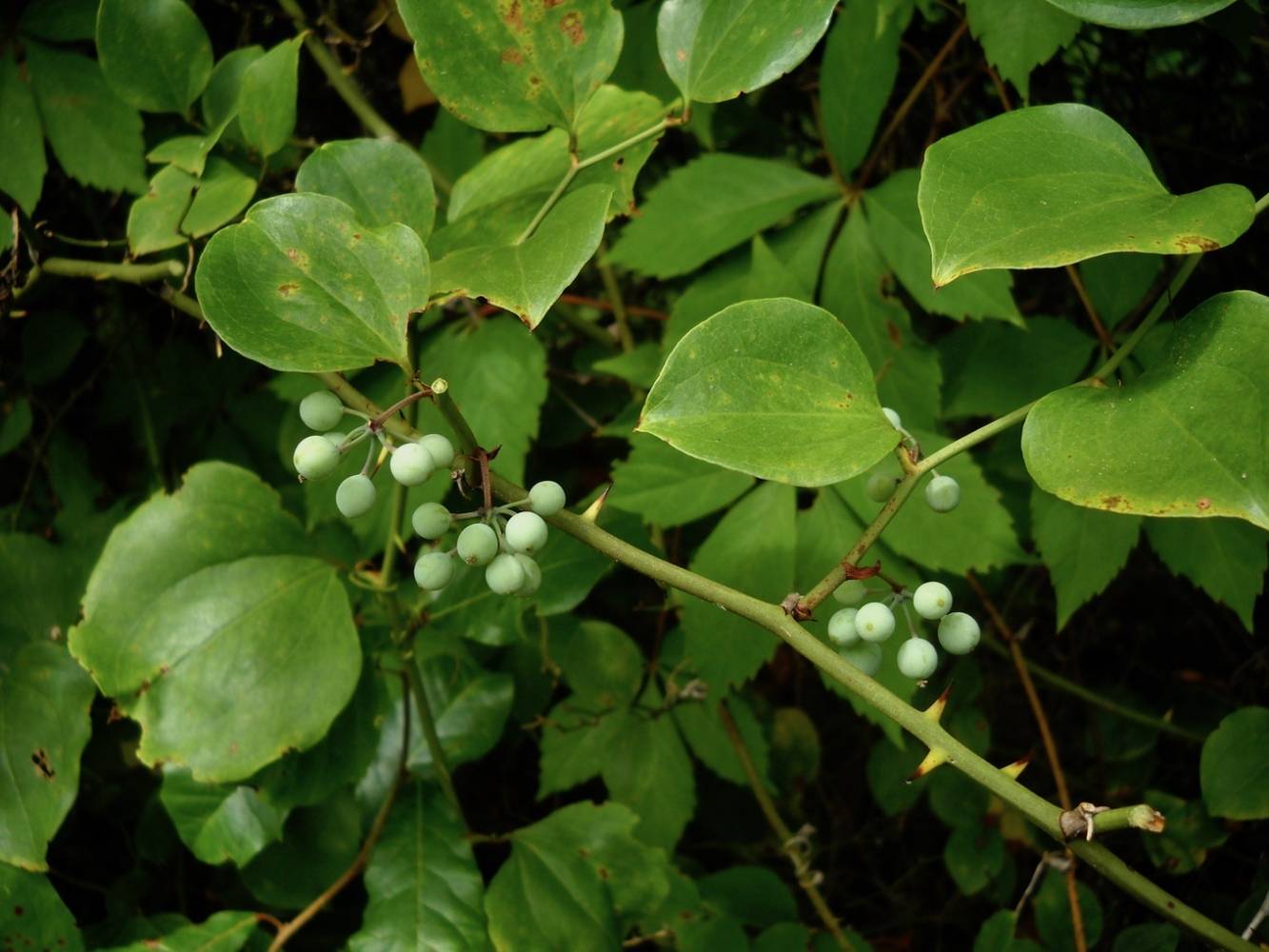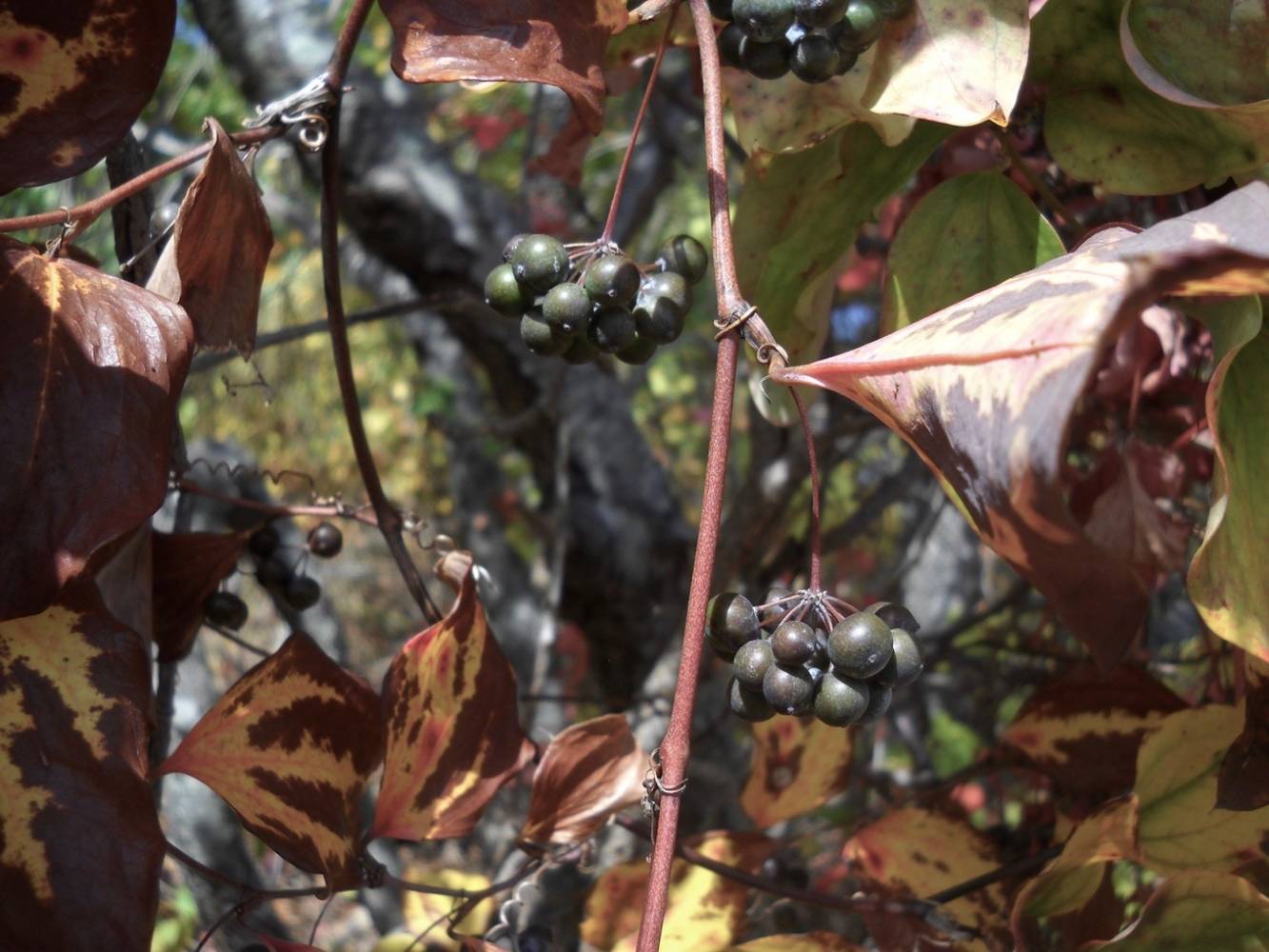roundleaf greenbrier
Smilax, the scientific name for this native vine is commonly used to refer to roundleaf greenbrier because it is shorter. It has a woody stem that is no thicker than a pencil and yet it is able to reach tree tops by attaching its growing shoots onto existing vegetation with tendrils. Additionally, there are hooked thorns on the stem that prevent slippage once height is achieved.
In areas of abundant light, stems will grow onto themselves to eventually create impenetrable brier patches such as along the edge habitats of the Upland Trail between U3 and U5. Webs of Smilax stems are suspended in mid-air between the crowns of small tree or are draped like curtains from the limbs of large trees. Many trees along Pond Trail also carry substantial loads of this climber.
Smilax leaves fall off after the growing season but the thorny stem remains green throughout the year. This potential for continuous photosynthesis would be a boost for plants that are heavily shaded by canopy foliage during the growing season.
It is dioecious, so either male or female flowers would be found on a particular stem, never both. Since new stems of Smilax can arise from underground rhizomes of an individual, and not only from a seed, adjacent stems may be clonal and hence would be of the same sex. Plants of both sexes do occur at Salter Grove as evidenced by the small clusters of ripe black fruits on leafless vines in winter. They do not last long because birds are attracted to the fruits.
Human uses of the plant range from food to medicine. The young shoot tips are eaten raw or cooked. Fruits can be made into jelly or jam. Roots are ground into flour or used like any other root vegetable.

